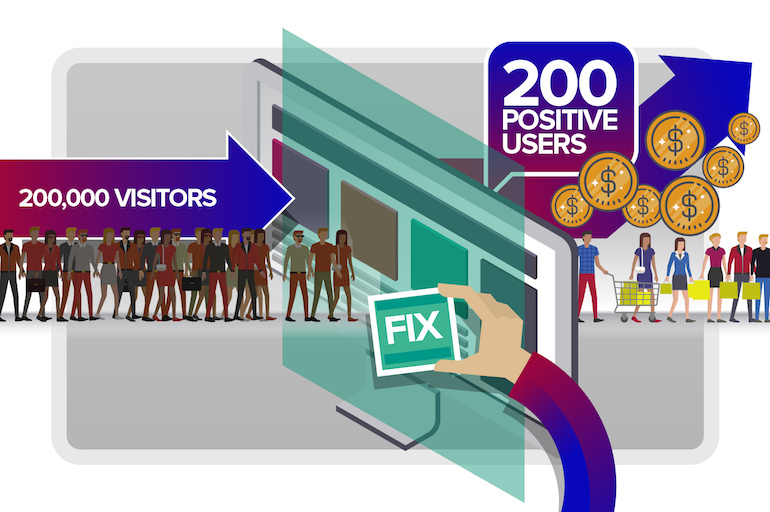By Fadi Ali, CRO Manager, RBBi
Every time I mention “CRO” to friends or associates, the usual response I receive is: “you mean A/B testing right?”
In hindsight this is to be expected, a few years ago CRO never really existed. It has grown out of the digital revolution and is still evolving as a ‘natural’ response to the rapid pace of technological changes and digital user behavior.
So, what is CRO?
Conversion Rate Optimisation is a set of tools and methods to extract the most conversion from a website. It makes use of your current traffic by converting passive users into active users, by finding why they are not converting and fixing it.
Breaking this down:
A conversion is completing the desired action on your website which could be:
- Spending more time on an offer page
- Requesting a call-back
- Buying a product
- Filling out a form
- Subscribing to a newsletter.
A positive user is a user that converts, while a passive user is a user who leaves without converting e.g. performing an action on your website. Therefore, the conversion rate is the percentage of positive visitors out of the total number of visitors.
So, if you have a website with 200,000 visitors a month and 4000 positive users, your conversion rate would be 2%, which could attribute to a profit of X AED. Now, if your business objective was to double X AED, the natural response would be to attract more than 200,000 visitors. But, by making your site more efficient and increasing your conversion rate to 4% by introducing a CRO activity to your digital plan could achieve the same objective without the potentially heavy media outlay.
How does it work?
In theory, the principle of CRO is very simple: to optimize the performance of your website, you first need to understand what’s not working i.e. why your audience isn’t converting, and then you look at ways to fix that problem and convert your audience.
A CRO plan should have three key steps:
- Diagnosis
- Hypothesis
- Testing
During the diagnosis phase, the goal is information gathering. Starting from the business objectives, you will need qualitative and quantitative research to understand the problem.
Based on your research findings, you will then be able to build hypotheses. These are then prioritised and filtered against your objectives, in order to be translated into solutions or variants.
The idea behind CRO is not to make any guesses or assumptions but to test your selected variants to determine which is best for your business. Testing the performance of the new VS original designs can help determine the preferred solution by your users and how elements can help increase conversions of your site.
Why is it important?
From a business perspective, the most important aspect of CRO is that it can help increase your user conversions, therefore (depending on your objective) the profitability of your site and company.
CRO is an ongoing process and can be a robust approach to validate your solutions and grow your business:
- It helps you to spend your money efficiently. If you are already investing a lot of money to bring more traffic to your site, but you don’t see the conversion change you were expecting, CRO is there to help. Investing in CRO will help to improve your conversion rate by making use of the traffic that is coming to your site. As a result, it is more efficient to fix your conversion problems first and then invest more in paid adverting to get the most out of your media spends.
- There is always room for improvement; you can always enhance the conversion process and make it more efficient and user-friendly. Trends and user behaviors are constantly evolving at a rapid pace, so you should always keep your conversion process in shape and suited to your audience and these changes.
- Testing is the core of the process. CRO helps you to build new solutions based on facts and numbers, not assumptions. Therefore, it helps to put your website in a position where data leads to decision making, ensuring that the user experience is prioritised as well as changes which deliver an improved ROI.
Data-driven decisions methodology is the digital media future, and CRO guarantees that your digital product is healthy, powerful and flexible to meet your target audience’s needs perfectly and makes the most of your organic and paid traffic and eventually increase your profit.






